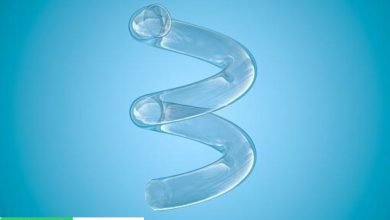BPC-157 is a 15-amino-acid penta-decapeptide. It is a piece of the body protection compound (BPC) sequence found in and isolated from stomach acid. It has been suggested in animal experiments to potentially hasten injury recovery, including those involving muscle, tendon, and ligaments. BPC-157 has been hypothesized to mitigate the development of certain stomach ulcers and has been speculated to protect other organs. BPC-157 is believed to exhibit analgesic potential and support rapid wound healing due to its alleged ability to speed up reticulin and collagen production, stimulate angiogenesis, and infiltrate macrophages and fibroblasts.
In this article
What exactly is BPC-157 Peptide?
Body Protection Compound-157, or BPC-157 for short, is a form of the original body protection compound. The BPC protein may be isolated in the digestive system. Research suggests that protecting the GI lining from injury, facilitating healing, and stimulating new blood vessel formation are crucial functions it may serve. The effects of the bigger BPC protein have been speculated to be preserved in the synthetic pentadecapeptide BPC-157, which consists of 15 amino acids. It has been hypothesized that BPC-157 may affect, in particular:
- Tissue repair
- Vascular development
- Cascade of coagulation
- Nitric oxide production
- Gene expression
- Hormone production and secretion
BPC-157 Peptide and Wounds
Investigations have purported that BPC’s potential in the gastrointestinal system may extend to preserving the mucosal barrier that separates the digestive and absorption tracts from the underlying tissues from the damaging effects of digestive juices like gastric acid and bile. Fibroblasts are believed to be involved in Hating this function, at least in part. It has been suggested that BPC-157 may accelerate the proliferation and migration of fibroblasts at increasing concentrations. Since fibroblasts are responsible for the deposition of extracellular matrix proteins, including collagen, fibrin, elastin, and others, they play a crucial role in the reparative process of wounds.
BPC 157 Peptide and Vascularization
Findings imply that BPC-157 may be a powerful angiogenic factor that might stimulate the proliferation and growth of endothelial cells, which line blood arteries. Studies in rats suggest that the peptide may significantly accelerate the development of collateral blood vessels in response to ischemia. BPC-157 has been speculated to have this effect primarily in the gastrointestinal tract. Still, there is data for similar properties in cardiovascular, neurological, and muscle tissues, suggesting it may be studied further within the context of stroke and heart attack and as a probative peptide for research in healing following ischemic injury. The activation of VEGFR2, a cell surface receptor involved in the nitric oxide signaling pathway, has been hypothesized as a method through which BPC-157 may enhance vascular development in chicken embryos. It has been suggested that VEGFR2 may contribute to endothelial cell expansion, survival, and maintenance.
The presentation of BPC-157 has been speculated to induce vascular “running” in cell culture studies. To restore blood flow to distant tissue and safeguard cell function after damage or arterial obstruction, a mechanism known as “vascular running” occurs. Under the influence of BPC-157, it may potentially be feasible to impact slow-growing artery occlusions, such as those observed in atherosclerotic heart disease. Stenting, coronary artery bypass grafting, and other invasive surgical procedures might become obsolete if this line of inquiry bears fruit.
BPC-157 and Tendons
BPC-157 has been purported to be effective in animal models of tendon, ligament, bone, and other connective tissue injuries due to its alleged functions in fibroblast recruitment and blood vessel formation. Injuries to tendons and ligaments take a long period to heal since they don’t receive a lot of blood flow. Inadequate blood flow to an injured location delays the arrival of fibroblasts and other wound-healing cells, retarding or reducing the potential for full recovery. Research with rat tendons in vitro suggests that BPC-157 may potentially increase fibroblast density and facilitate collateralization in the context of tendon, ligament, and bone damage. These findings imply that BPC-157 might function as a healing hormone for these tissues compared to bFGF, EFG, and VGF.
BPC-157 Peptide and Oxidative Stress
In rat studies, nitric oxide and malondialdehyde (MDA) are two oxidative stress indicators speculated to be reduced by BPC-157. Studies have suggested that it may also decrease the generation of reactive oxygen species in the digestive system, lending more credence to this peptide’s antioxidant potential. The levels of the peptide BPC-157 appear to rapidly rise in cell culture, supporting the hypothesis that modified Lactococcus lactic bacteria may transport it to the gastrointestinal tract.
References
[i] T. Huang et al. “Body defensive compound-157 improves salt consumption twisted mending in vivo and advances multiplication, relocation, and angiogenesis in vitro,” Medication Des.—Devel. Ther., vol. 9, pp. 2485–2499, 2015.
[ii] D. Drmic et al. “Balance of punctured cecum sores in rodents: Impacts of pentadecapeptide BPC 157, L-NAME and L-arginine,” World J. Gastroenterol., vol. 24, no. 48, pp. 5462–5476, Dec. 2018.
[iii] F. Amic et al. “Bypassing major venous impediment and duodenal sores in rodents, and treatment with the stable gastric pentadecapeptide BPC 157, L-NAME and L-arginine,” World J. Gastroenterol., vol. 24, no. 47, pp. 5366–5378, Dec. 2018.
[iv] J. Vukojević et al. “Rodent substandard caval vein (ICV) ligature and specific new bits of knowledge with the stable gastric pentadecapeptide BPC 157,” Vascul. Pharmacol., vol. 106, pp. 54–66, 2018.
[v] D. Drmic et al. “Celecoxib-actuated gastrointestinal, liver and cerebrum sores in rodents, contravention by BPC 157 or L-arginine, irritation by L-NAME,” World J. Gastroenterol., vol. 23, no. 29, pp. 5304–5312, Aug. 2017. 6
[vi] M.-J. Hsieh et al. “Therapeutic potential of pro-angiogenic BPC157 is associated with VEGFR2 activation and up-regulation,” J. Mol. Med. Berl. Ger., vol. 95, no. 3, pp. 323–333, 2017.
[vii] Z. Grabarevic et al. “The impact of BPC 157 on nitric oxide agonist and bad guy actuated sores in grill chicks,” J. Physiol. Paris, vol. 91, no. 3–5, pp. 139–149, Oct. 1997.








